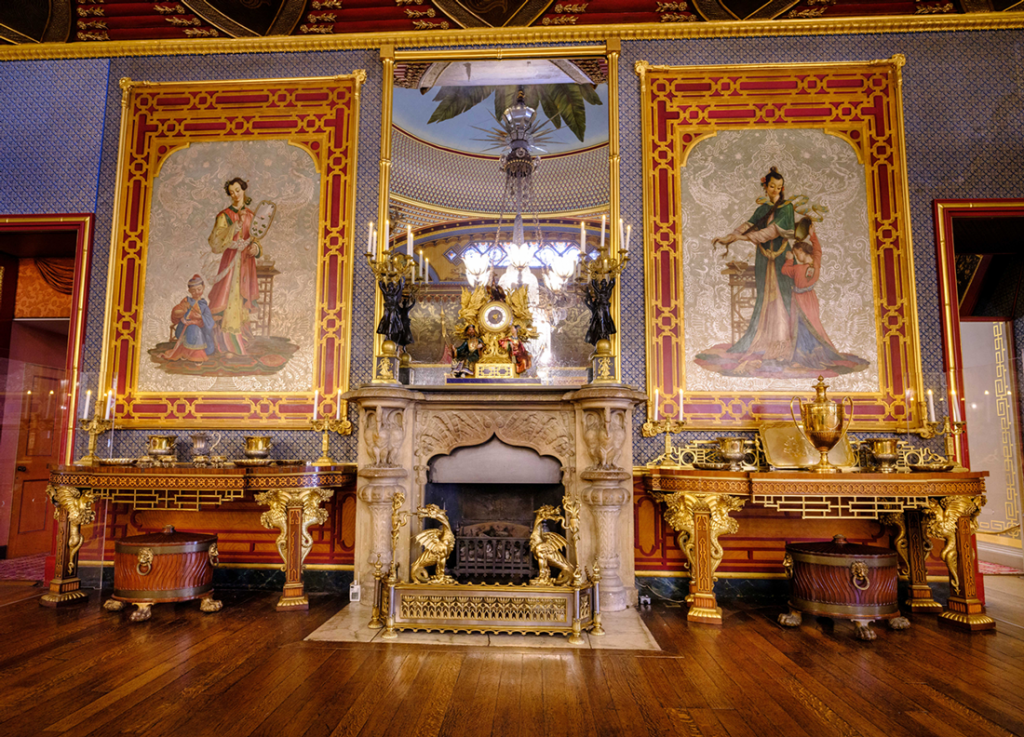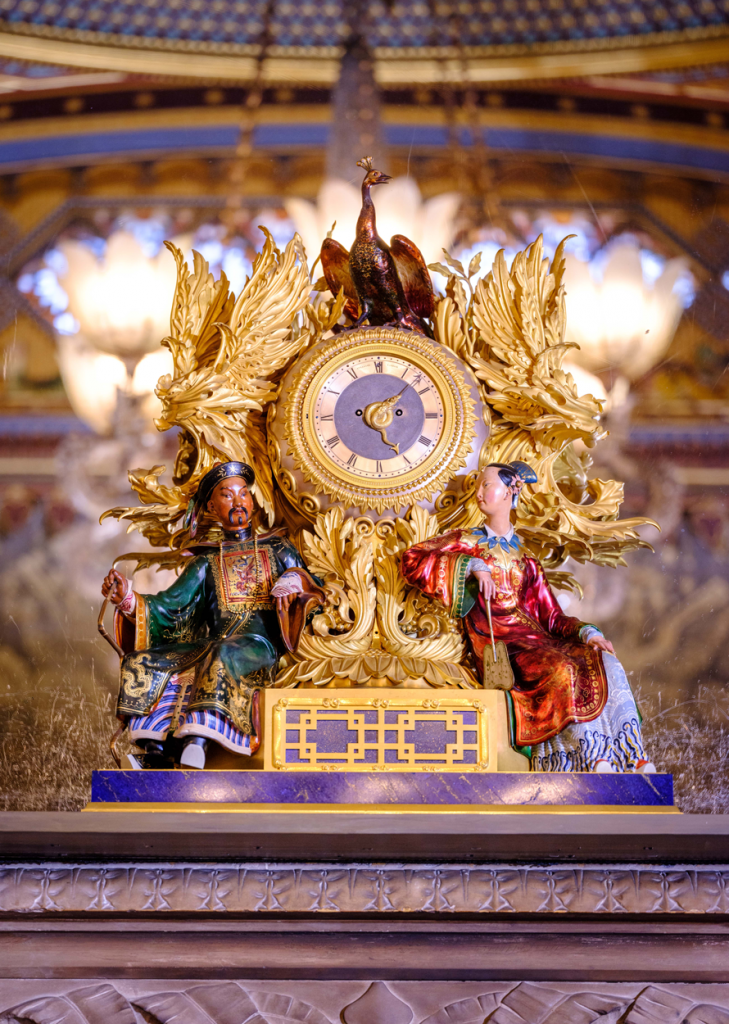
In the first of a series of articles I am exploring a significant and generous loan of objects by Her Majesty The Queen to the Royal Pavilion, Brighton. These important objects will be on display at the Royal Pavilion until the autumn of 2021.
Amongst these are some of the most splendid pieces commissioned by George IV for the Royal Pavilion. The exhibition ‘A Prince’s Treasure’ provides a once in a lifetime opportunity to see this collection in the context of its original setting as George IV would have intended.
This week I am in the company of David Beevers, Keeper of the Royal Pavilion, who has overseen this remarkable collaboration between the Royal Collection Trust and the Royal Pavilion. The loan comprises of more than 120 objects which are on display at the Royal Pavilion for the first time since their removal to London in 1847/48. David explains how Queen Victoria enjoyed her Uncle George IV’s extravagant taste at Brighton.
When Brighton and the building no longer suited Queen Victoria’s family needs it was decided that the Pavilion should be sold and it was assumed that the site would be redeveloped. The fixtures, including fireplaces and wall panels, and the decorative objects, wallpapers and furniture were removed to London where many of them were installed under Prince Albert’s direction in the newly built East Wing at Buckingham Palace.
With remarkable foresight and in an act of enlightened civic patronage the Pavilion was bought and saved for the town by the Brighton Town Commissioners and their Clerk, Lewis Slight.
In 1863 Queen Victoria generously returned a number of important murals and chandeliers. Since then Royal patronage has seen numerous objects returned to the Royal Pavilion, thanks to a series of gifts and loans. In 1955 Her Majesty The Queen returned more than 100 objects on long term loan.
As we enter the Banqueting Room I remark on how the decorative whole is so much more apparent and alive with the loans in place. David agrees saying “Everything speaks – it suddenly starts talking to each other.”
He explains how the designs of Robert Jones can be discerned in the details and overall decorative scheme. Many of the pieces are designed by Jones. As we stand before one of the fireplaces it becomes apparent that the dragon and serpent motifs decorating the steel, brass and gilt-bronze fenders and fire dogs are repeated elsewhere. The legs of the superb rosewood, mahogany and satinwood veneered serving tables, manufactured by Tatham, Bailey and Sanders are delicately carved with gilded dragons. In the overdoor panels, too, carved gilded serpents and dragons are framed beneath arched palmette friezes bringing together the Chinese and Indian styles.

I ask David if he has a favourite piece and he shows me an extraordinary mantel clock saying “This clock reflects the Pavilion style at its confident best.” He describes how the clock was designed by Robert Jones and made by Vuillamy. The Chinese figures echo those painted on the walls. The gilt-bronze foliage was gilded by Fricker and Henderson and seems to allude to an eagle in flight.
Benjamin Lewis Vuillamy was horologist to the Royal family and his work rivalled the French manufacturers. With its enamelled figures and peacock surmount it speaks of George IV’s patronage of the very finest craftsmanship of his age.
‘A Prince’s Treasure’ is an extraordinary exhibition which brings to life the patronage of a Prince and King here in the very heart of Sussex and I am looking forward to revisiting. The generous, intelligent procession through the rooms and the other Covid precautions with ticketed, timed entry has been designed to keep the visitor safe. Visit www.brightonmuseums.org.uk/royalpavilion/ to book your tickets. This is a must see exhibition!